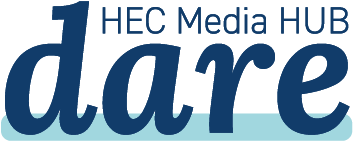- Attitudes toward AI affect creative performance
- AI authority impacts human behavior differently
- Human identity adapts in AI-augmented workplaces
While many may think creativity will be a key human capacity as work processes get increasingly automated, AI-applications get more creative as well: for example, AI-painted portraits sell at exorbitant prices, pop hits feature AI-generated music, and mainstream media ‘hire’ AI-journalists to publish thousands of articles a week. How workplace AI-application will impact creative processes, crucial for innovation and organizational development, is an important question that needs rigorous scientific attention. Interview with Daria Morozova, one of the authors of the research “Humanness and Advanced Technologies in Organizations: On Being Truly Human While Working with AI”, co-authored by Stefan Haefliger, Zoe Jonassen, Anil R. Doshi, Zhu Feng and Shane Schweitzer, and published in the Academy of Management in July 2024.
Why did you decide to study this topic?
AI’s role in creativity remains understudied. On one hand, AI can accelerate innovation and broaden creative possibilities. On the other, obstacles like algorithmic appreciation and aversion can hinder adoption, trust, and even human self-image.
What is new in my work is to consider AI not only as a technological tool but as a social actor influencing human beliefs, behavior, and identity, and, hence, the collaboration of human and AI. This perspective is vital for organizations aiming to foster innovation without compromising human dignity and creativity. By understanding and shaping perceptions of AI, managers can facilitate more productive and fulfilling human-AI partnerships.
How did you approach this topic?
First, I examined how different attitudes toward AI (curiosity, caution, and skepticism) shape creative performance. My fellow researchers and I assessed how exposure to AI affects creative effort, comparing situations where humans collaborate with AI or simply witness its outcomes.
The second phase focused on understanding how AI’s authority - whether it gives orders or only suggestions - affects its usage in creative and non-creative tasks. In this experimental project, I analyzed people’s adherence to AI-generated recommendations, considering how they view AI’s expertise in relation to tasks of varying complexity.
Finally, I took a conceptual approach to defining “situated humanness” in AI-augmented environments. By examining how certain human qualities become more salient in response to AI’s involvement, I contribute to the emerging dialogue on what it means to be human in an AI-driven workplace.
How do people perceive themselves in creative tasks when working with AI?
People who were cautious about AI engaged more deeply in creative tasks, whereas skeptics often disengaged, leading to poorer creative outcomes. Surprisingly, those curious about AI showed minimal changes in their creative performance.
How do orders or suggestions given by AI affect human behavior in creative versus non-creative tasks?
People followed AI’s advice more readily in non-creative tasks but resisted it in creative contexts, especially when they felt their human uniqueness was threatened.

How do humans adapt their behaviors when collaborating with AI?
Human-AI collaboration in creative environments is deeply influenced by psychological perceptions and task framing. When creativity is portrayed as a uniquely human skill, individuals tend to invest more effort, although this doesn’t always yield better creative outcomes.
Also, the way AI is introduced - authoritative figure versus supportive tool - significantly impacts how people engage with it.
Sources
Article by Daria Morozova, based on her paper, “Humanness and Advanced Technologies in Organizations: On Being Truly Human While Working with AI”, co-authored by Stefan Haefliger, Zoe Jonassen, Anil R. Doshi, Zhu Feng, Shane Schweitzer, published in the Academy of Management, July 2024. This research was funded by the Hi! PARIS Center.

